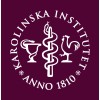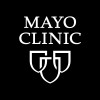
Laparoscopic Lateral Suspension With Mesh & Sacrocervicopexy for the Treatment of Uterine Prolapse...
Pelvic Organ ProlapsePelvic Floor ProlapseThis study is aimed to compare the efficiency of two uterus-preserving laparoscopic methods to treat uterine prolapse in a randomized controlled trial. Laparoscopic lateral suspension with mesh (LLSM) will be compared with laparoscopic sacrohysteropexy (LS). Both procedures are known as sufficient uterus preserving methods. LLSM was introduced to be an alternative to others with avoiding dissection of promontory and therefore being safer, faster and feasible technique.

Comparison Between Transvaginal Mesh and Traditional Surgery for Pelvic Organ Prolapse
Vaginal ProlapsePelvic organ prolapse is characterized by a lack of pelvic floor support causing the pelvic organs and vaginal walls to protrude. For decades, suture repair techniques have been the primary choice of surgical treatment when indicated. Traditional surgical techniques are frequently associated with unsatisfying anatomical recurrence rates and it is plausible that inherently weak, or damaged, pelvic floor supportive tissues need to be reinforced by a permanent support to avoid the high rates of recurrences commonly described using traditional techniques. Over the years sporadic attempts have been made to introduce novel surgical techniques using a variety of biomaterials with varying success. Despite a lack of clinical safety data, or compelling clinical evidence demonstrating that it improves outcomes compared to traditional suture techniques, use of biomaterials in pelvic reconstructive surgery has become widespread in just a few years . It is likely that biomaterials need to be "anchored" in tissues not afflicted by the disease, in order to provide the intended pelvic floor support. This has given rise to transvaginal surgical techniques using a transobturator approach passing the mesh through the arcus tendineous fascia pelvis, or the sacrospinous ligaments through a transgluteal approach. Short term data from concluded and on-going safety assessments of these techniques has provided promising results and satisfying clinical outcomes. The aim of the present study is to compare anterior mesh repair (PROLIFT®) with traditional suture repair in a randomised trial.

Anterior Pelvic Prolapse Reconstruction With TiLOOP® PRO A Polypropylene Mesh
CystoceleUterine ProlapseThe purpose of this study is to determine the influence of anterior pelvic prolapse reconstruction with a titanized polypropylene mesh on patients quality of life.

Effect of Salpingectomy During Conservative Hysterectomy
Genital DiseasesFemale7 moreThe study compares the effect of bilateral salpingectomy associated with conservative hysterectomy on ovarian function to the standard hysterectomy with conservation of both ovaries and tubes in terms of hormone assays, ovarian ultrasound evaluation, complications, quality of life.

A Randomized Controlled Trial of Permanent vs Absorbable Suture for Uterosacral Ligament Suspension...
Pelvic Organ ProlapseCystocele1 moreUterosacral ligament suspension (USLS) is a commonly performed, vaginal surgery for the correction of female pelvic organ prolapse. The original description of this procedure included the use of permanent sutures. However, permanent suture use in this vaginal application can result in some minor complication such as persistent vaginal spotting, vaginal discharge and dyspareunia. Subsequent reports on this procedure have utilized delayed-absorbable sutures in order to avoid these complications. Retrospective studies are conflicting as to whether or not absorbable suture provides as durable an anatomic outcome as permanent suture. There are currently no high-quality, prospective studies that have evaluated outcomes of permanent and absorbable suture for uterosacral ligament suspension. This study will recruit women scheduled to undergo USLS with or without other prolapse or anti-incontinence procedures. Participants will be randomized 1:1 to permanent or absorbable suture. Follow up will occur at 6 weeks and 12 months post-operatively. The primary outcome will be Pelvic Organ Prolapse Quantification Exam (POP-Q) point C as measured at the 12 month follow up visit. Subjects and assessors will be blinded.

Comparative Study of Mesh Versus No Mesh in Prolapse Surgery
Vaginal ProlapseCystoceleHypothesis / aims of study A RCT has shown that results of prolapse repair via vaginal approach could be improved when a polypropylene mesh is used as tissue support (1). However, non protected heavy-weight meshes were associated with a high rate of local complications such as vaginal erosions and dyspareunia (2). The aim of this multicentre study is to evaluate anatomical and functional results of an innovative low-weight polypropylene mesh protected by an absorbable hydrophilic film in the prolapse repair by vaginal route, in comparison by the standard anterior colporrhaphy. Study design, materials and methods This study involves 15 centres in French Private or Public Hospital. Patients will be randomly allocated to be operated by a standard anterior colporrhaphy or by an anterior repair reinforced by a specially designed mesh: UgytexTM (Sofradim, France). Ugytex is a low-weight (38g/m²) and highly porous (average porosity: 89%, pores over 1.5mm) polypropylene monofilament mesh offering tissue ingrowth and connective differentiation for a stable and long-term support. The mesh is coated with a hydrophilic film composed of atelocollagen, polyethylene glycol and glycerol. The absorbable coating protects delicate pelvic viscera from the risk of acute inflammation during the healing's inflammatory peak. Prolapse severity will be evaluated using the POP-Q system. In order to evaluate the patient's quality of life, the validated PFDI and the PFIQ questionnaires will be used preoperatively and during follow-up (3), as well as a validated questionnaire on sexual problems. The difference on one-year cure rate should be 15% (80% for the anterior colporrhaphy and 95% for the mesh repair). Then the estimated number of patient is 97 in each arm.

Abdominal Versus Vaginal Hysteropexy
Uterine ProlapseThis study will compare the vaginal versus the abdominal approach for the management of uterine prolapse

Prediction of Postsurgical Symptomatic Outcomes With Preoperative Pessary Use
Vaginal Vault ProlapsePelvic Organ Prolapse2 moreThis is a single center, prospective trial of pessary use prior to reconstructive pelvic floor surgery for pelvic organ prolapse. The goal of the study is to evaluate the change in pelvic floor symptoms with pessary use and subsequent reconstructive surgery. Additionally, we will assess the impact that preoperative pessary use has on patient self-reported preparedness for surgery.

Randomized Controlled Trial Comparing Acellular Collagen Biomesh (Pelvisoft) to Polypropylene Mesh(Pelvitex)...
Uterine ProlapseThis research protocol is a randomized controlled trial. It is being done to compare and find out the relative differences between the materials, (Pelivisoft) "natural organic mesh" to poly propylene mesh (Pelvitex) "manmade mesh" after a surgery known as sacral colpopexy. This surgery involves supporting the prolapsed vaginal wall with a piece of material (known as a graft) attached to a ligament along your backbone (or sacrum). These materials are both FDA approved and widely used. The following objectives: anatomic outcomes, graft-related complications between the two materials, changes in pelvic organ prolapse-related quality of life, subjective changes in sexual function,changes in bowel function and the prolapse related pain present after sacral colpopexy will be evaluated. The study visits are all under standard of care. Study questionnaires are unique to the study and will be completed at the enrollment in hospital, 2, 6,12 weeks, 6 months and one year visits The questionnaires are related to bowel function, bladder function, prolapse and sexual activity. Permission will be requested to contact the patient again 5 years after surgery. Contact in the future will in no way obligate the patient to participate. There may or may not be direct medical benefits to the participant. Decreased risk of erosion may be a possible benefit if placed in the organic "natural" arm of the study. The information learned from this study may benefit other patients in the future

Laparoscopic Fascial Duplication Plus Sacral Colpopexy in Posterior Vaginal Prolapse
Pelvic Organ ProlapsePosterior Vaginal Wall ProlapseA Randomized Clinical Trial on Laparoscopic Fascial posterior vaginal duplication with absorbable sutures plus sacral colpopexy mesh placement VS sacral colpopexy isolated for vaginal posterior prolapse
